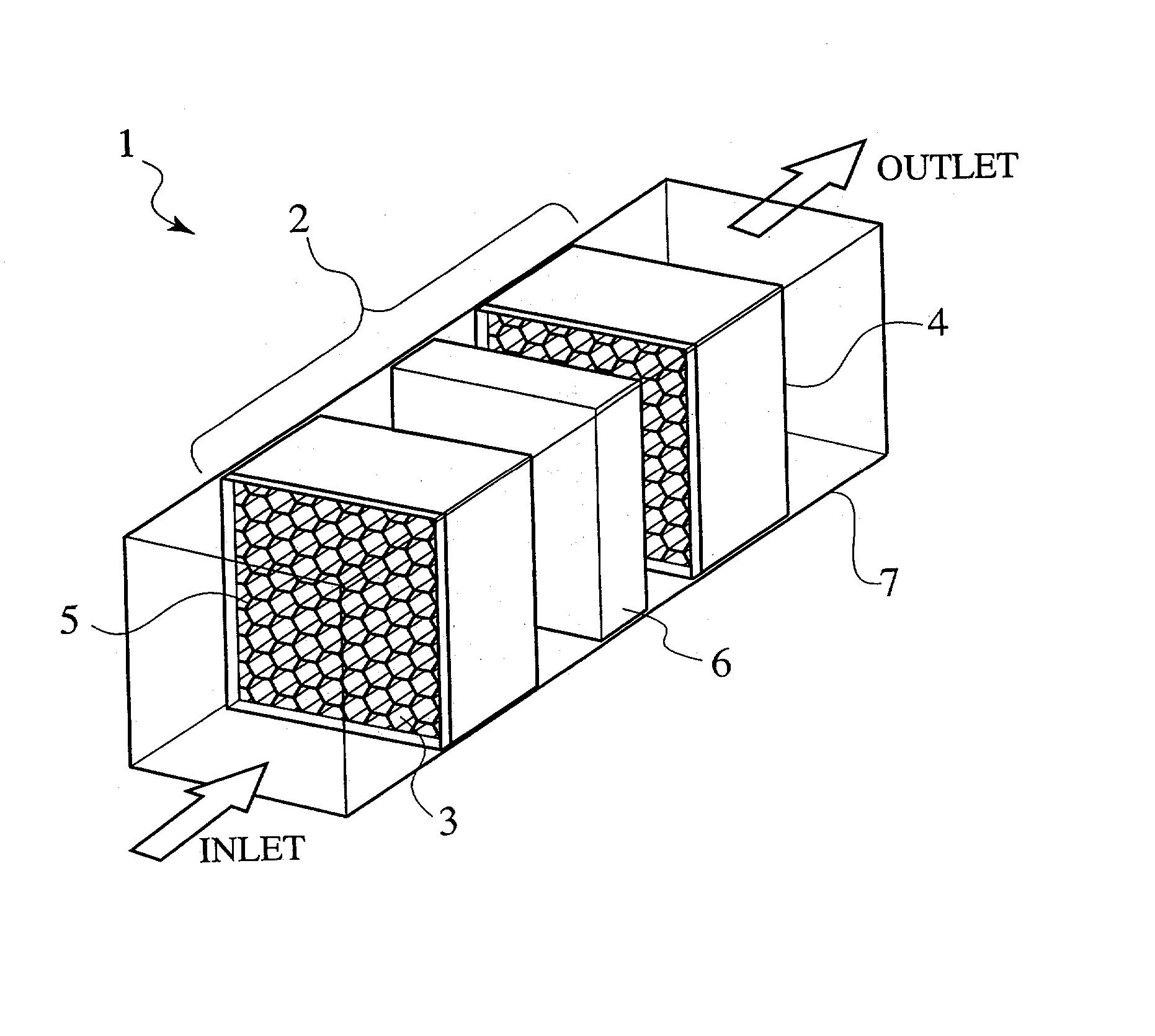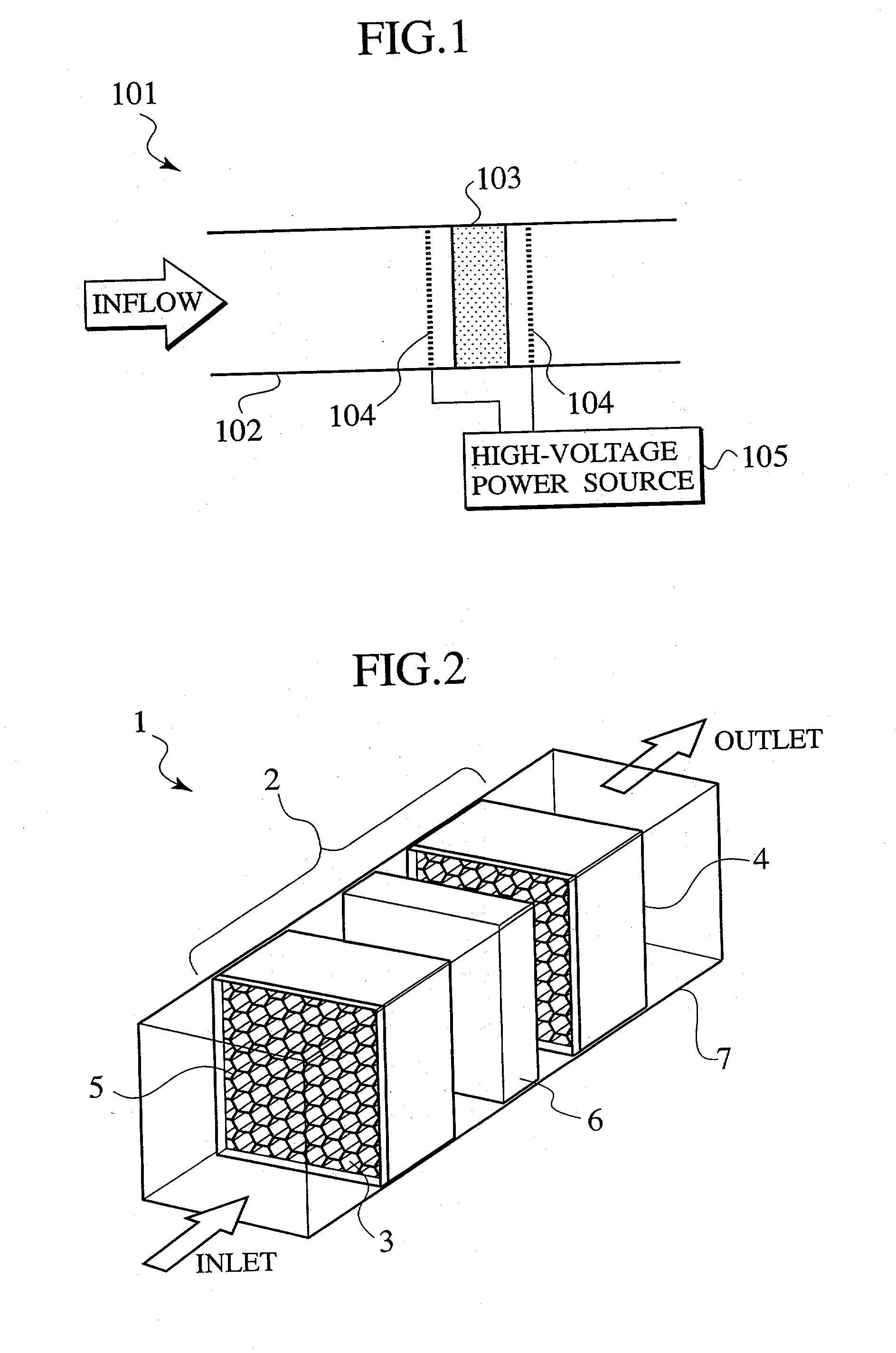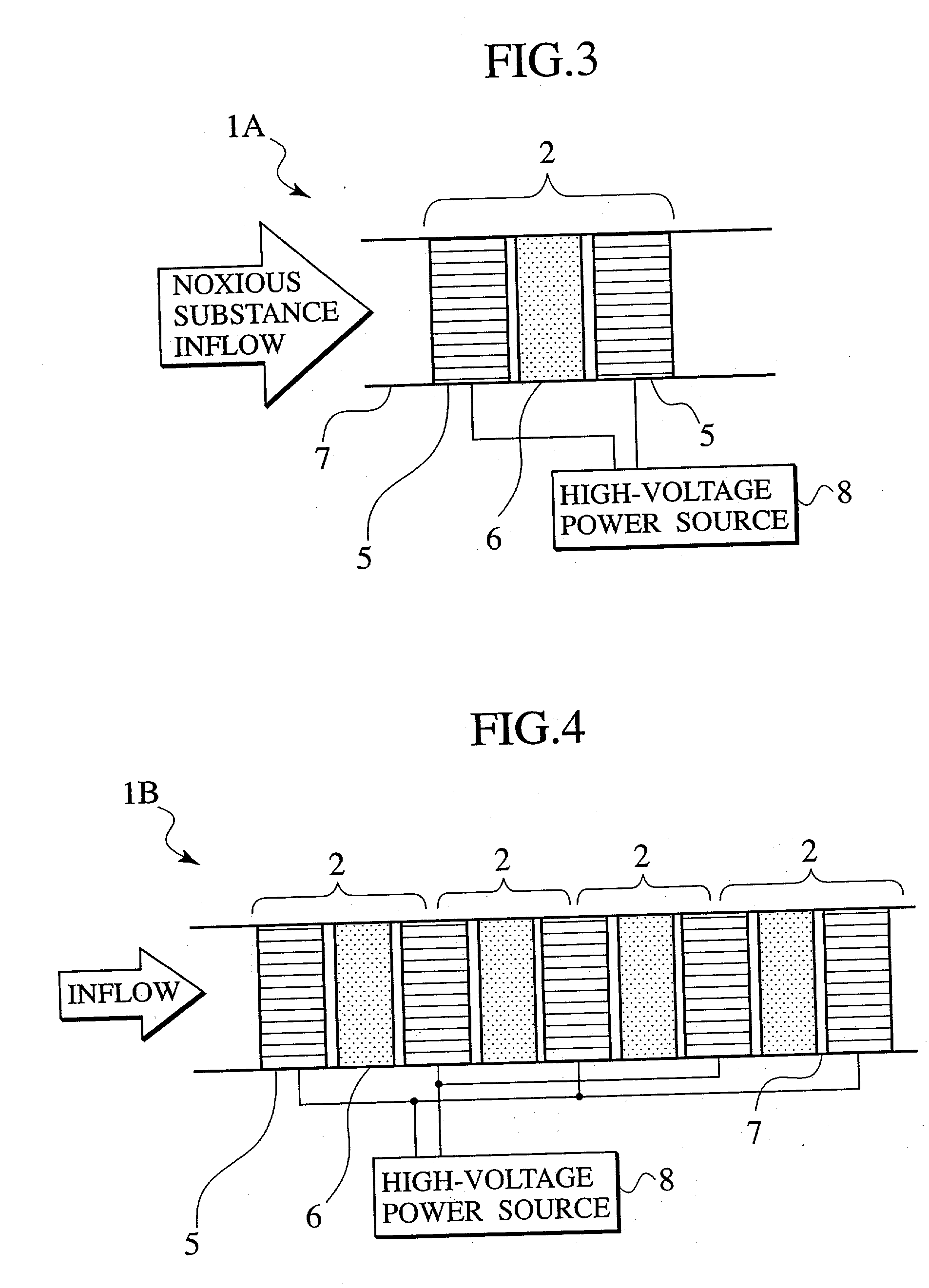Discharge electrode and photocatalysis apparatus
a discharge electrode and photocatalysis technology, applied in the direction of physical/chemical process catalysts, disinfection, separation processes, etc., can solve the problems of closed spaces, environmental pollution, and some problems in the related ar
- Summary
- Abstract
- Description
- Claims
- Application Information
AI Technical Summary
Benefits of technology
Problems solved by technology
Method used
Image
Examples
first embodiment
[0031] (First Embodiment)
[0032] FIGS. 2 and 3 show a photocatalysis apparatus according to the first embodiment of the present invention.
[0033] In FIG. 2, the photocatalysis apparatus 1 (IA in FIG. 3) has a unit structure 2 and a casing 7 housing the unit structure 2. The casing 7 is in a pipe shape and has an inlet and an outlet to pass gas containing hazardous substances therethrough. The unit structure 2 includes a pair of honeycomb electrodes 5 and a photocatalyst module 6 sandwiched between the electrodes 5. The electrodes 5 are connected to a high-voltage power source 8 (FIG. 3).
[0034] Each electrode 5 is made of an electrode body 3 and a conductive frame 4. The electrode body 3 is a three-dimensional structure formed from cells made of a conductive foil. The electrode body 3 has front, back, and side faces in which the front and back faces are separated from each other by a predetermined distance and have a honeycomb shape, to pass gas containing hazardous substances through ...
second embodiment
[0061] (Second Embodiment)
[0062] FIG. 4 shows a photocatalysis apparatus 1B according to the second embodiment of the present invention. The second embodiment employs a plurality of unit structures each being the unit structure 2 of FIGS. 2 and 3.
[0063] The photocatalysis apparatus 1B has a plurality of (four in this example) unit structures 2, a casing 7 accommodating the unit structures 2, and a high-voltage power source 8. Each unit structure 2 has a pair of honeycomb electrodes 5 and a photocatalyst module 6 sandwiched between the electrodes 5. The electrodes 5 are connected to the power source 8.
[0064] Two adjacent unit structures 2 share one electrode 5 so that each electrode 5 may efficiently emit light toward the unit structures 2.
[0065] The configuration, material, etc., of the electrode 5, photocatalyst module 6, semiconductor catalytic particles of the module 6, and power source 8 are basically the same as those of the first embodiment, and therefore, are not explained ag...
third embodiment
[0069] (Third Embodiment)
[0070] FIG. 5 shows a photocatalysis apparatus IC according to the third embodiment of the present invention. The third embodiment is a combination of the photocatalysis apparatus of the first embodiment and an ozonolysis catalyst 9.
[0071] The photocatalysis apparatus 1C has a unit structure 2, the ozonolysis catalyst 9, a casing 7 housing the unit structure 2 and ozonolysis catalyst 9, and a high-voltage power source 8.
[0072] The unit structure 2 includes a pair of honeycomb electrodes 5 and a photocatalyst module 6 sandwiched between the electrodes 5. The electrodes 5 are connected to the power source 8. The ozonolysis catalyst 9 is arranged downstream from the unit structure 2 in a gas flowing direction.
[0073] The configuration, material, etc., of the electrode 5, photocatalyst module 6, semiconductor catalytic particles of the module 6, and power source 8 are basically the same as those of the first embodiment, and therefore, are not explained again.
[007...
PUM
| Property | Measurement | Unit |
|---|---|---|
| Thickness | aaaaa | aaaaa |
| Thickness | aaaaa | aaaaa |
| Thickness | aaaaa | aaaaa |
Abstract
Description
Claims
Application Information
 Login to View More
Login to View More - R&D
- Intellectual Property
- Life Sciences
- Materials
- Tech Scout
- Unparalleled Data Quality
- Higher Quality Content
- 60% Fewer Hallucinations
Browse by: Latest US Patents, China's latest patents, Technical Efficacy Thesaurus, Application Domain, Technology Topic, Popular Technical Reports.
© 2025 PatSnap. All rights reserved.Legal|Privacy policy|Modern Slavery Act Transparency Statement|Sitemap|About US| Contact US: help@patsnap.com



